
THE Morrison government will work together with Aboriginal groups to design a representation for Indigenous Australians at all levels of government decision making.
Called the Indigenous Voice, it will enable Indigenous Australians to have a greater input into the design, development and implementation of policies and programs that specifically affect them.
- The federal government will ask States, territories & local governments to participate.
- New body to advise on all issues impacting Aboriginals.
- These will include social, spiritual and economic.
The Voice will be divided into two parts with the first, the Local and Regional Voice, working at the local and regional government levels, while the second, the National Voice, will work at the national government level.
This comes after the release of the Indigenous Voice Co-design Final Report to the Australian Government on Friday.
GRASSROOTS
Minister for Indigenous Australians Ken Wyatt said the federal government released the Final Report to facilitate broader community discussion and consultation with grassroots Indigenous communities and organisations.
“The Morrison Government committed at the 2019 Federal Election to undertake a process of co-design to develop models and options for an Indigenous voice and to enhance local and regional decision-making,” he said.
“Today, we have delivered on that commitment, following an extensive co-design process involving more than 9400 people, communities and organisations.”
Mr Wyatt said doing this right is essential and that the Indigenous Voice initiative will only work if it has a strong foundation from the ground up, which is why the government is starting with what it calls the Local and Regional Voice.
“The Local and Regional Voice will contribute to achieving Closing the Gap outcomes by providing avenues for Indigenous spokespeople to be heard, including providing feedback to the government on Closing the Gap,” he said.
From January, members from the Indigenous Voice Co-design directed a four month public consultation process based on the Interim Report proposals, through which people around the country could have their say.
According to the report, respondents overwhelmingly supported the need for an Indigenous Voice in parliament and approved the core proposals suggested by the Interim Report.
This feedback was then used to assist the Indigenous Voice groups in finalising the proposals for the Final Report, which outlines how Indigenous representatives could provide input from both a local and regional level and a national level.
DISCUSSIONS
The next step the federal government will take is to initiate discussions with States, territories and local governments to encouraging them to participate in Local and Regional Voice arrangements.
It will also form a local and regional Voice Establishment Group to help establish 35 local and regional voice bodies.
A National Voice will also be established, with its membership linked to the local and regional Voice bodies. It will consist of 24 members, with at least two members from each state and territory and one member to represent mainland Torres Strait Islanders.
The National Voice will also act as an advisory body to the Australian Parliament and government on issues of national significance to Aboriginal and Torres Strait Islander people, such as social, spiritual and economic wellbeing.
Prime Minister Scott Morrison said the purpose of the Indigenous Voice was to ensure the government could hear the voices of Indigenous Australians “on the ground”, and because he wanted to “close the gap”.
GESTURES
“This is about listening to local Indigenous communities, and that’s where the voice must start. It doesn’t start with grandiose gestures; it doesn’t start with big political speeches.
“It starts on the ground pulling together local Indigenous communities and listening carefully to them so we can get service delivery right. That’s what our voice is about,” he said.
Labor’s Shadow Minister for Indigenous Australians did not respond to a request for comment.PC


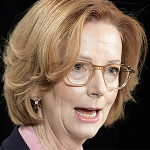
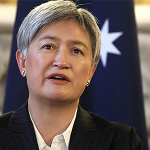
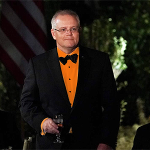
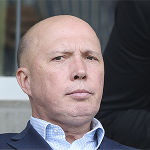

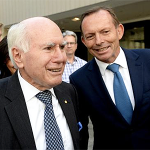

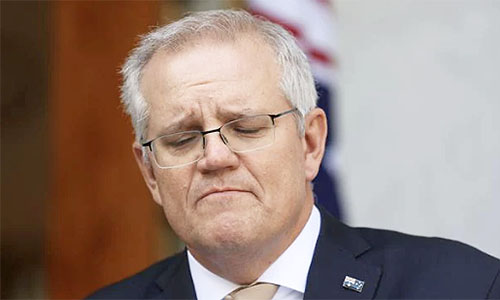

Morrison would do well to remember that governments should legislate for equality of opportunity, not equality of outcome.
The first aboriginals came to this country ~ 47000 years ago. We know this for a fact because that’s when the extinction of the Mega fauna began:
https://www.researchgate.net/publication/312577659_Humans_rather_than_climate_the_primary_cause_of_Pleistocene_megafaunal_extinction_in_Australia
These people came out of SE Asia and New Guinea. They were called Negritos. About 25000 years ago the second group of people came from Japan. They were the Ainu but were known as the Murrayians and they continued exterminating the Mega Fauna and the Negritos.
The current people came about 15000 years ago from Sri Lanka and are related to the Vedda people. They were called the Carpentarians. They exterminated the Murrayians, completed the extermination of the Mega fauna and also the burning of the continent changing it from rainforest into the arid and semi arid country it mainly is today.
All 3 groups walked here due to the ice age reduction in sea level and despite Pascoe’s nonsense have left no lasting cultural heritage apart from minimal stone age artefacts. All 3 groups were violent, patriarchal and oppressive and had major impacts on the environment of the land.
I see nothing worthwhile in aboriginal history meriting the incredible concessions proposed for these failed cultures. We live in a democracy where any citizen can run for parliament. This proposal will be divisive, threaten our democracy and as I say it is without merit.
We are all Australians in 2021, and all Australians have the right to stand for election to become a member of a parliament or local government council, and there are many Australians who have ancestors who were the first migrants as well as ancestors who who were migrants on and after 1788.
A treaty is a nonsense and would be divisive.
From Wikipedia: “Wyatt is an Indigenous Australian, also of English, Irish and Indian descent.”
Exactly how black is Wyatt? From the photo, I’d guess one-eighth, or maybe a sixteenth. I did call his office once to ask , but, strangely enough, they didn’t want to say.
Shouldn’t Ken be championing the establishment of bodies comprising those of English, Irish, and Indian descent, so that they, too, can “advise” our governments?
I understand that any Australian can claim to be indigenous (most probably to have indigenous ancestry) as long as that person’s claim is supported by a couple of Indigenous Australians, no gene testing required and thereafter entitled to whatever taxpayer funded benefits are available.
Just making a point I remember a cattleman on talkback radio during the years of ATSIC before it was shut down by the Howard Government because of governance and corruption issues, he said that cattle with more than 10 per cent of a different breed were not of a pure breed and not recognised as such.